
11 minute read
ACT COVID-19 Surge Centre Delivered in Record Time with Pre-Fab Steel
IN THE GRIP OF THE GLOBAL COVID-19 PANDEMIC, CONSTRUCTION COMPANY MANTEENA AND PRE-FABRICATION SPECIALISTS AUSTRUSS DELIVERED A WORLD CLASS COVID-19 SURGE CENTRE IN JUST 36 DAYS. MANTEENA WAS ENGAGED BY ASPEN MEDICAL UNDER A DESIGN AND CONSTRUCT CONTRACT TO DELIVER A 17,000m2 51-BED MEDICAL FACILITY FOR THE ACT AND SURROUNDING REGION. WORKING DAY AND NIGHT SHIFTS, THE TEAM HAD UPWARDS OF 130 CONTRACTORS ON-SITE AND COMPLETED 22,000 MAN HOURS. THE FACILITY WAS BUILT USING PRE-FABRICATED WALL FRAMES AND ROOF TRUSSES MADE FROM TRUECORE® STEEL, MANUFACTURED OFF-SITE BY AUSTRUSS. THE HIGHLY COLLABORATIVE RELATIONSHIP BETWEEN MANTEENA, AUSTRUSS AND ASPEN MEDICAL WAS ESSENTIAL TO ON-TIME DELIVERY OF THE PROJECT, AS WAS THE PRE-FABRICATED, HIGHLY FLEXIBLE LIGHT GAUGE STEEL DESIGN.
On 9 April 2020, construction company Manteena commenced the delivery of a COVID-19 Surge Centre on Garran Oval, adjacent to Canberra Hospital.
Advertisement
The project team achieved practical completion after an initial design phase of seven days and a construction period of just 36 days—not only achieving the goal of a very, very tight program but delivering a facility built to Australian Standards, as well as the World Health Organisation (WHO) Sudden Acute Respiratory Infection Treatment Centre manual. According to Damien Crough (Executive Chairman, prefabAUS), "This COVID specific project was delivered in an unprecedented timescale with the use of prefabricated frames and trusses, wall and ceiling systems, and bathroom pods."
"Australia's prefab industry is merging to mainstream, with significant projects such as the COVID-19 Surge Centre in Canberra taking full advantage of the benefits it has to offer. The focus on design for disassembly and re-use is an inherent sustainability benefit for prefabricated construction." "Prefabrication has a crucial role to play in transforming Australia’s built environment through decreasing construction time frames and construction waste, while increasing quality, productivity and affordability."
Rod Mitton (Design Manager, Manteena) described how the project initially commenced. "I received a phone call from Mantenna CEO Simon Butt on 1 April 2020 asking if I thought we could undertake design and construction of a new medical facility within the next 40 days. Without looking at the date—which just so happened to be April Fool’s
Day 1: Site establishment.
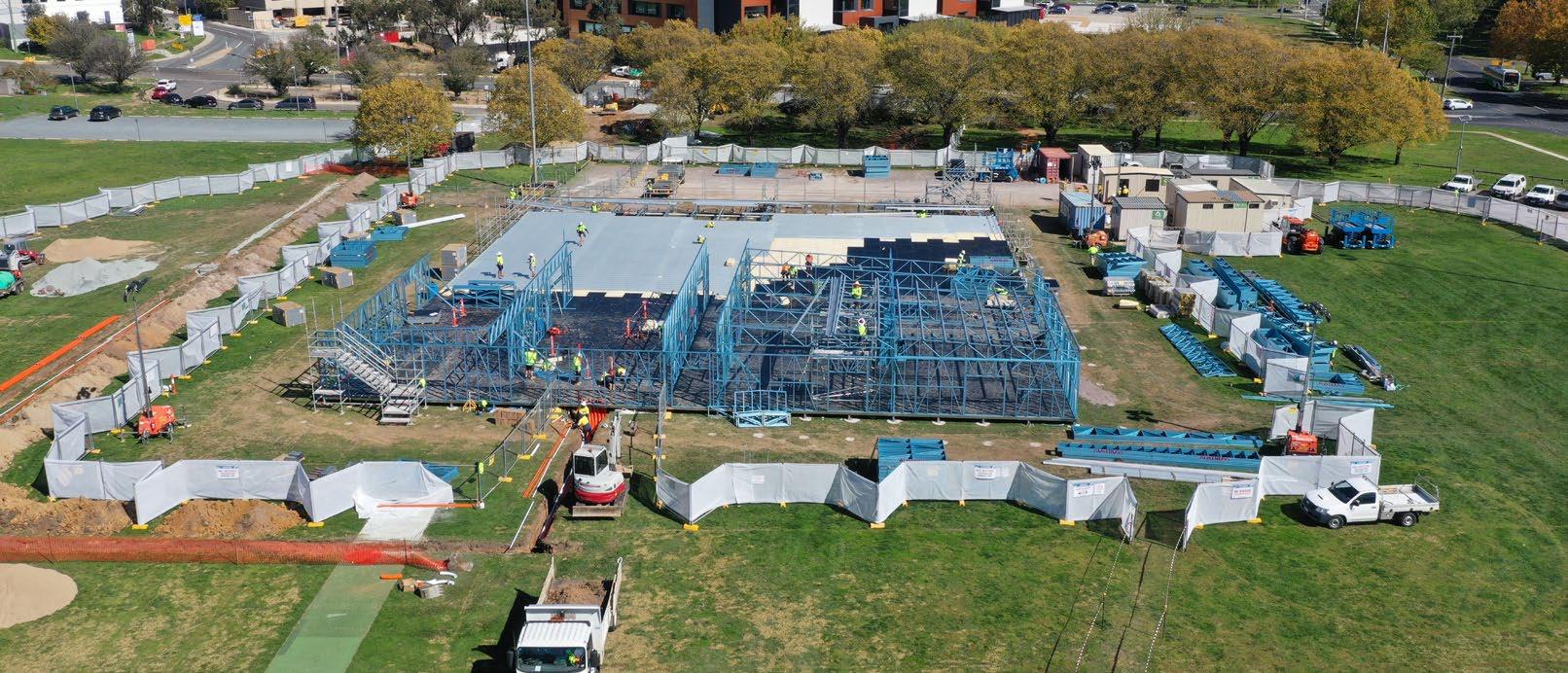
Day 3: Installation of joists. Day 10: Wall frames.
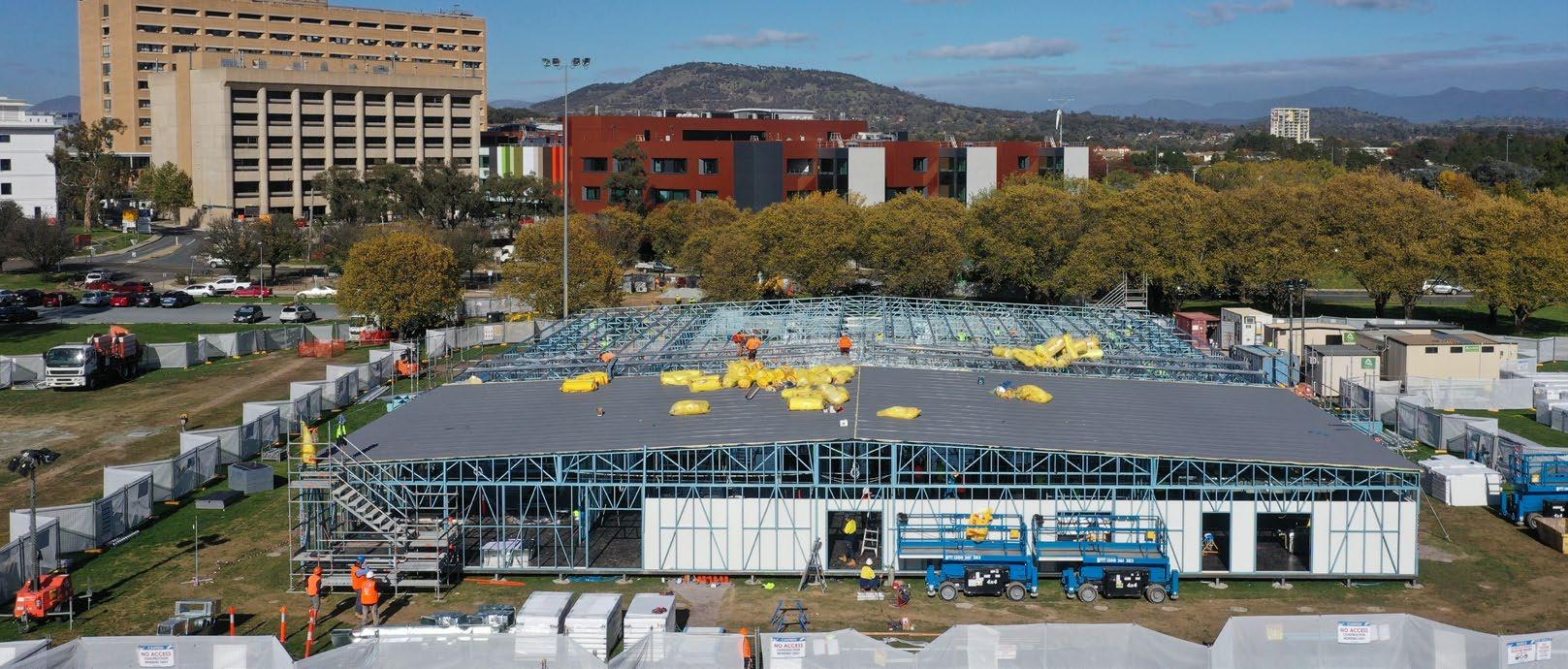
Day 13: Chasing trades.

Day 16: Mechanical and electrical installation.
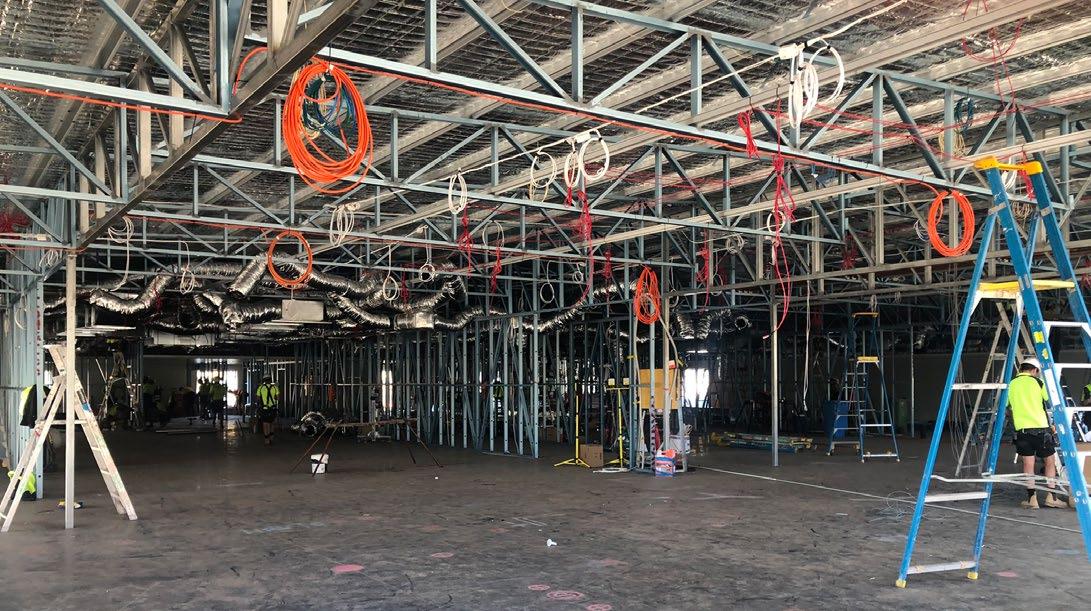
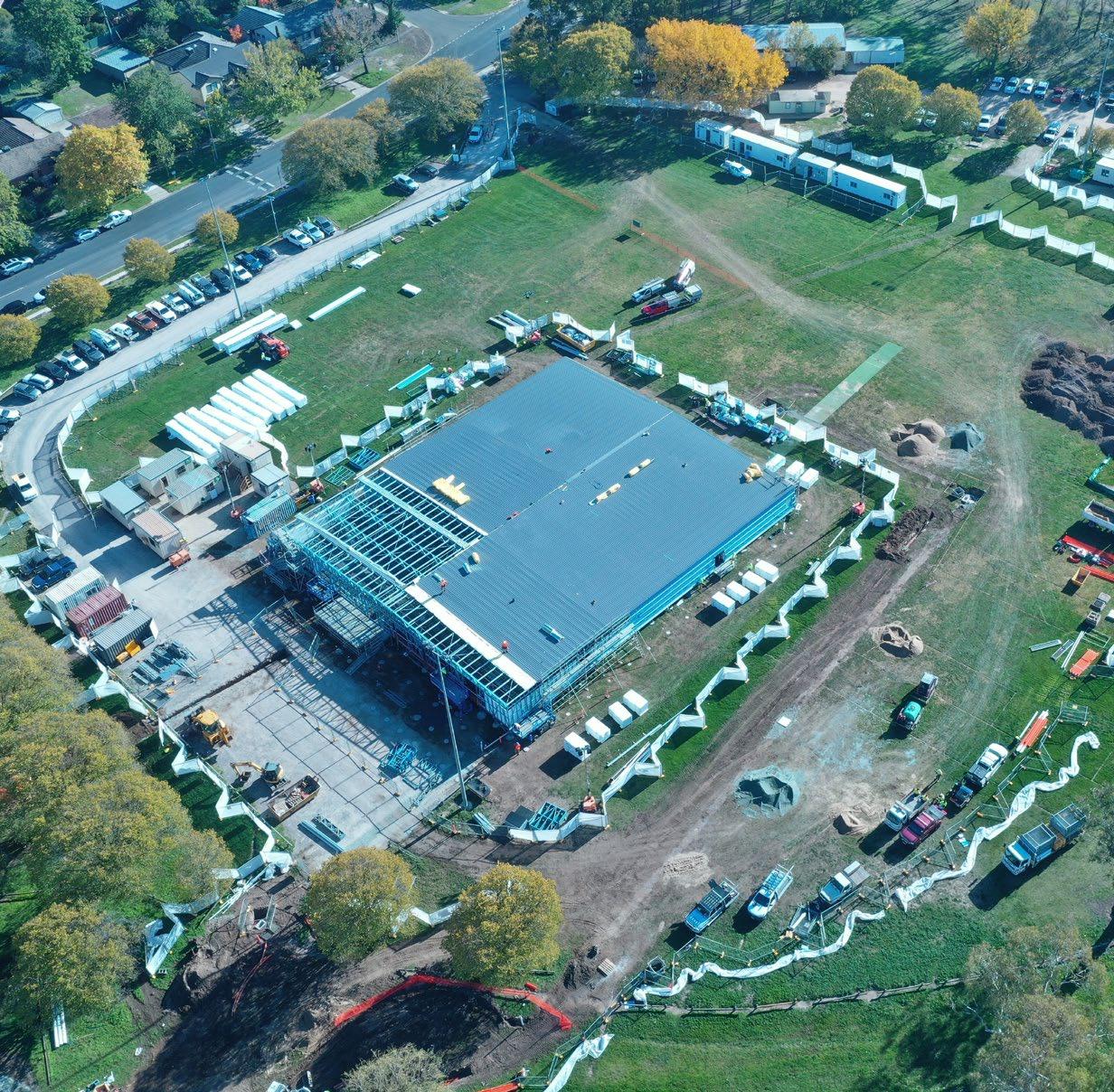
Day 15: Roof sheeting installation. Day 20: Wall cladding installation.
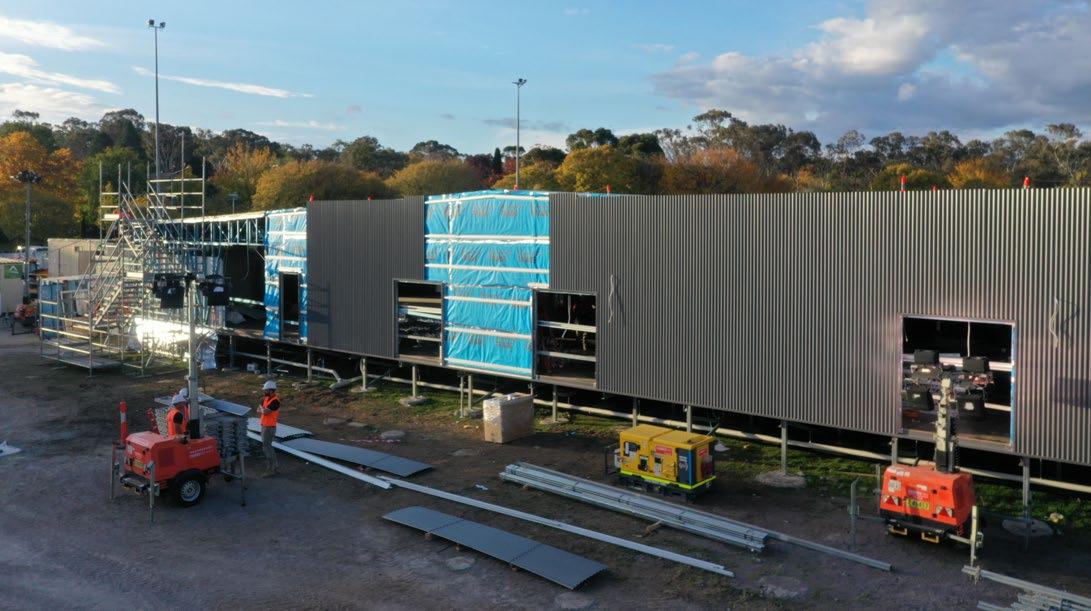
Day—my answer was, ‘Yes, of course we can’."
The brief provided by the client, Aspen Medical, called for the construction of a 17,000m2 medical facility, consisting of 51 patient beds, including patient services panels, treatment areas, administration and nurse stations and staffing facilities. The structure was to be built to cyclone standards to account for the helicopter landing deck near the hospital.
"Simon also explained that the design was only at concept stage at that point. There were no working plans to start the process. The location of the building was not even confirmed," said Mitton.
"We knew that in order to get the project off the ground quickly, we’d have to develop the internal designs sufficiently so as to declare a footprint and begin manufacture of the facility structure and construction foundations immediately. We’d also need to determine construction methodology for the project. There was no tolerance for long lead times, which meant that all technology and equipment would have to be 'off the shelf', or quickly or locally assembled."
"Having undertaken a number of projects with Austruss in the past, I phoned Andrew Fowler [Founder and Managing Director of Austruss] to sound him out on the project. Before the end of the day, Andrew and I had mapped out a plan on how we’d deliver the project using BlueScope’s Truecore® steel," said Mitton.
Andrew Fowler, Founder and Managing Director, Austruss
A FLEXIBLE DESIGN
According to Andrew Fowler (Founder and Managing Director, Austruss), a flexible design was key. "After speaking with Rod, I worked with one of my detailers on a concept based on a sketched-up drawing that Rod had given us. This allowed us to work out how we could finalise some dimensions."
"The brief required that the design be flexible, allow hospital live loads, withstand high wind loads, be reusable, and be able to be packed in a shipping container at end of use. Plus, the product needed to be designed to Australian Standards and on-site within just eight days."
"And we did just that," said Fowler.
"We took each section of the building and broke it into certain elements. The only way we thought we could achieve the compressed delivery timeframe was to use a simple kit of parts that were interchangeable. So we designed trusses on either side of the building and they were all standardised. The walls were all standardised. We came up with a telescopic wall frame system to give flexibility to the whole assembly process."
"The key was as many repeatable elements as possible to simplify the delivery process," said Fowler.
SITE ESTABLISHMENT
By the time a site location was identified one week later, the project team had created a building footprint and established a flexible work-inprogress floorplan.
As such, site establishment was rapid and footings were in place, ready for delivery of the sub-floor structure, three days after taking possession of the site on Thursday 9 April 2020.
Austruss worked throughout the Easter period, delivering the first lot of wall frames to site on Easter Sunday.
"The whole delivery of this project was just in time to suit what Manteena needed and so that the site wasn’t too cluttered," said Fowler.
The remaining internal design continued in parallel with manufacture of the structure. Within seven days of the initial engagement, the design team had a preliminary design for which the remaining packages of works could be constructed. In a highly flexible arrangement with the client, stakeholders, architects, engineers and suppliers such as Austruss, the design was finessed throughout the build to accommodate the client’s specific needs.
Day 37: Handover of the ACT's COVID-19 Surge Centre.
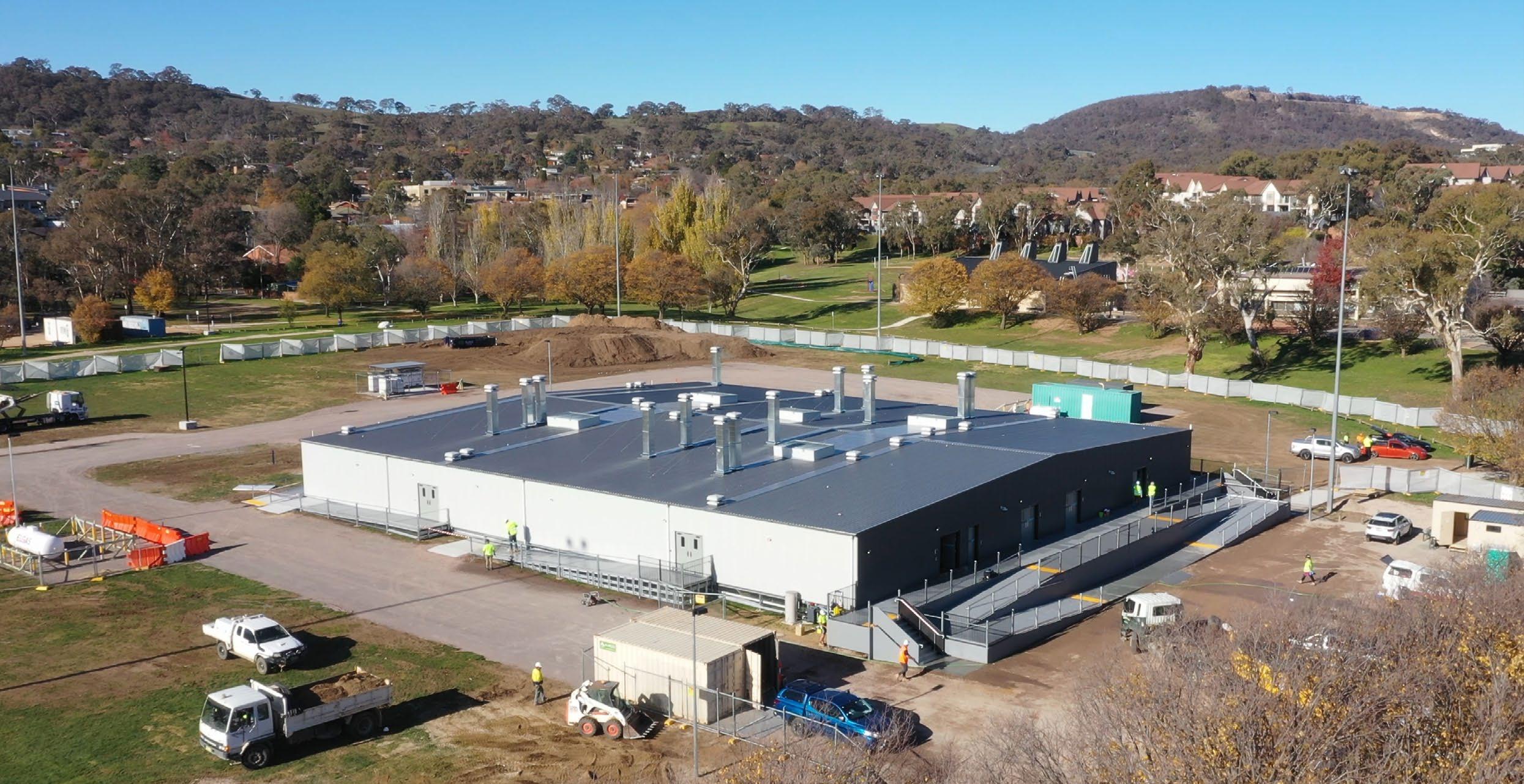
LIGHT WEIGHT STEEL CONSTRUCTION
"There was a lot of detail packed into the very short period. Probably the most crucial decision that was made in the first few days of the project was selecting light weight steel construction," said Mitton.
Before contacting Manteena, Aspen Medical had already undertaken enquiries into some Design for Manufacturing and Assembly (DfMA) products. As the design was still evolving, most volumetric options did not provide the flexibility required of the design that was still being decided. More importantly, advice was that other manufacturers were unable to meet the timeframes set out by the ACT Government.
"From Manteena’s perspective, Truecore®’s strength to weight ratio makes it a very viable option for this type of delivery. Its main attributes are that it doubles as a structural frame, as well as providing a substrate to directly affix cladding. It also provides flexibility for wall set out, and running services that heavy gauge structural steel doesn’t always provide. It can be produced efficiently without shop drawings if necessary. It’s quick to manufacture and easy to erect, negating the need for large in-ground foundations and cranage," said Mitton.
ASSEMBLY AND INSTALLATION
"For the assembly and installation process, our site team divided the floor plate into six stages. As foundations were drilled and concreted in first stage, the flooring team followed immediately behind installing posts and sub-flooring elements. As soon as they finished, the frame erectors started on walls and trusses, and so on. This allowed each trade to completely finish a section without other trades restricting progress. Night shifts were introduced to ensure that no stages fell behind," said Mitton.
"The building was spaced appropriately to allow for changes and finessing of internal design within the first two weeks of construction. As the design set out of the rooms was still being detailed, manufacturing of the frames needed to start in advance of the design if we were going to meet the tight timeframes."
"Austruss came up with the idea of making standard modular frames to meet this purpose. When erected on site, the install team was able to measure the run of the wall and then equally spread the frames to suit. No two frames were greater than 600mm apart as this was the maximum stud spacing allowed to distribute the roof load. Even as wall frames were being delivered, changes were being made to the floor. The Trucore® steel was strong enough to facilitate these changes and adapt to the different loadings on the structure," said Mitton.
Another innovation that Austruss developed was to design and construct the roof trusses to allow a full 3m gap between the trusses. This allowed significant space for plant and equipment to be installed between trusses, not underneath as would occur traditionally. This also reduced the overall height of the building as there were no ceiling voids under the trusses.
STEEL CLADDING
According to Mitton, another important decision was the selection of the cladding to be used in the project.
"The finishes were to be clean, comfortable and thermally efficient. We knew that traditional cladding like plasterboard and cement sheeting were not an option due to the programming constraints of fixing, setting and painting while service trades were waiting to fit out," said Mitton.
"We had to come up with a product that was thermally and acoustically sound that didn’t need painting but had a resilient finish to reduce infection control. Thermal cool room panels were the obvious choice, although consideration was given to other products like white rock."
"The thermal panels are constructed by placing an expanded polystyrene sheet between two layers of Colorbond cladding. Combining the Truecore® framing and the thermal panel meant that we still had a cavity to run the services in, without surface mounting any of the cabling or pipework. This was an important factor for infection control principles," said Mitton.
SUSTAINABILITY
While not part of the original brief, the team set a goal for the project to be able to be deconstructed and reconstructed elsewhere when no longer required.
materials used in the construction of the building can be reclaimed and nearly all of the building can be flat packed and re-established in a different location, either locally or internationally. This meant that no component could be no longer than what could fit into a 20 foot container. That goal was set for designers and suppliers," said Mitton.
"Locally sourcing materials and labour was another crucial aspect of ensuring that we were able to meet the project objectives. We were able to gain a commitment from regional and local contractors to do so. Austruss for one fabricated over Easter when most companies would have been shut down."
"There was minimal waste as a result of the build. We had very little left over on-site and what was left was deassembled and sent back to Austruss," said Mitton.
THE SPEED OF TRUST
This project was a success for both Austruss and Manteena who have worked on many projects together since Austruss opened their doors 17 years ago.
Fowler said, “The only way this project could be undertaken was due to the trust we’d developed with Manteena. We’ve had a longstanding relationship with Manteena. It comes down to the speed of trust. If you trust people you can get a lot done incredibly quickly.”
The unique circumstances of this project just further cemented their working relationship. “It just adds a new level of trust between both parties,” said Fowler.
Mitton praised Fowler and the Austruss team. "I want to acknowledge the relationship between Manteena and Austruss and the collaborative nature in which Austruss worked with us. This collaboration enabled the decision making process to proceed unimpeded, with the main objective being to open the facility as quickly as possible."
“Andrew’s very inventive and if you have an idea or a need, he will come up with a solution. We knew that if Andrew committed to the project, then he would deliver,” said Mitton.
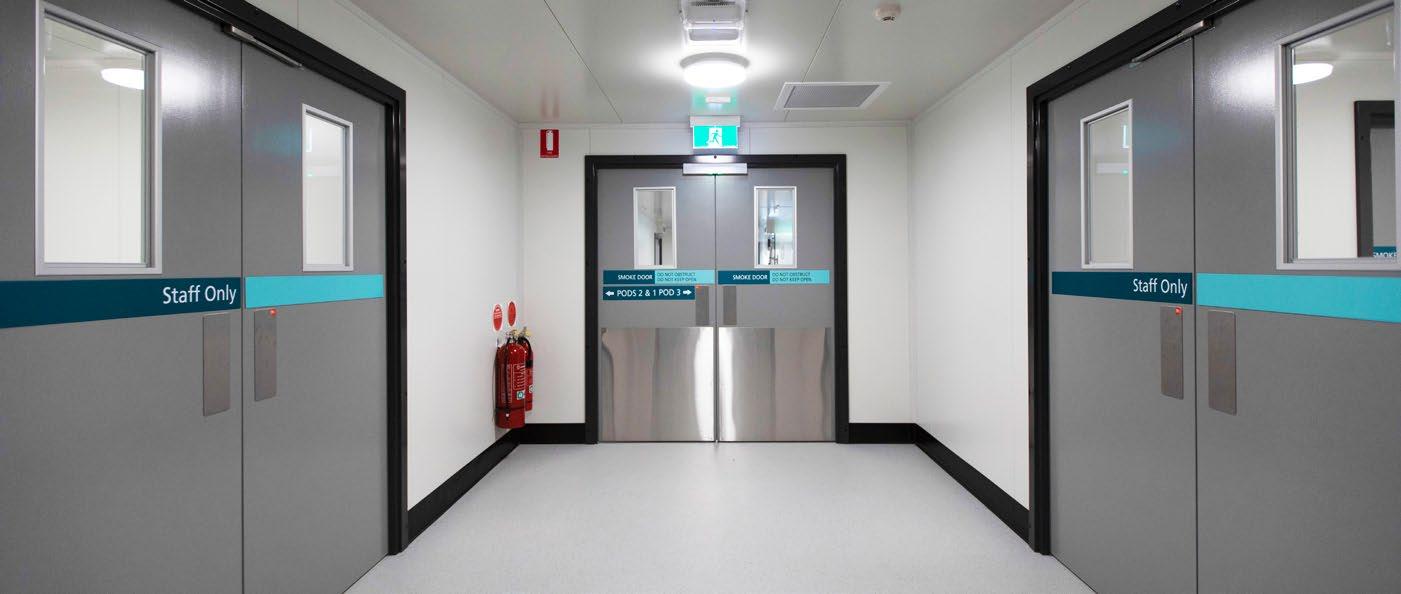
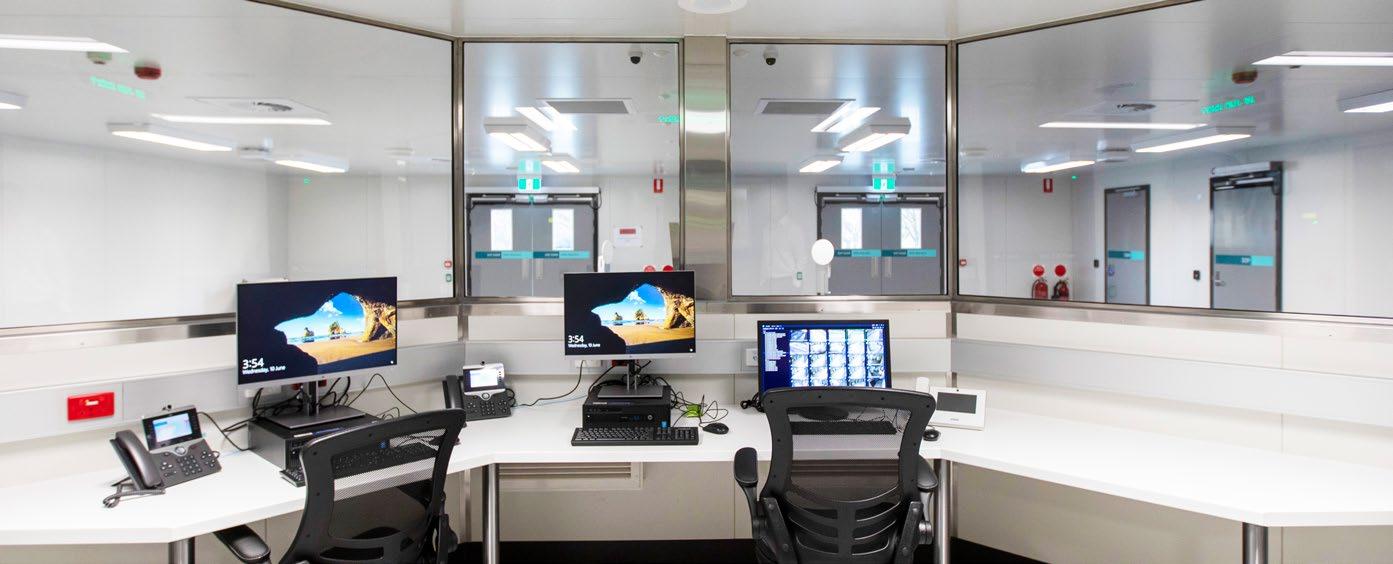
ASI would like to thank prefabAUS for providing access to their recent webcast on the COVID-19 Surge Centre case study, which provided much of the content for this article. For further information about prefabAUS, visit: https://www.prefabaus.org.au. Design Flexibility: With the floor plan for the structure still being finalised while frame fabrication was underway, design flexibility was key to the success of this project. According to Fowler, “Even as wall frames were being delivered, changes were being made to the floor plan. And Truecore® steel was strong enough to fulfil these changes and adapt to different loadings on the structure.”

The frames made from Truecore® steel allowed for design flexibility. “The product allowed for flexibility – allowing changes to be made onsite," said Mitton. "You take out a few screws, make a few changes and then all of a sudden you’ve got an opening where you didn’t have an opening before.”
Impressive strength-to-weight ratio: "Framing made from Truecore® steel is structurally very sound, which helped to allow for large spans of ceilings," said Mitton.
Speed and efficiency: "The frames that Austruss made from Truecore® steel were produced quickly and designed in a way that they were fast to erect onsite and facilitated the running of services (water pipes, electric cabling, and so on) very easily," said Mitton.
Consistent quality: "Knowing that Truecore® steel is a consistent quality product gave Austruss confidence with what they committed to deliver," said Fowler.
Reliable supply chain: "Vital to Austruss turning around the framing so quickly was knowing that enough Truecore® steel product was readily available within such a short time frame," said Fowler.
Hospital triage..
Resuscitation bays.

